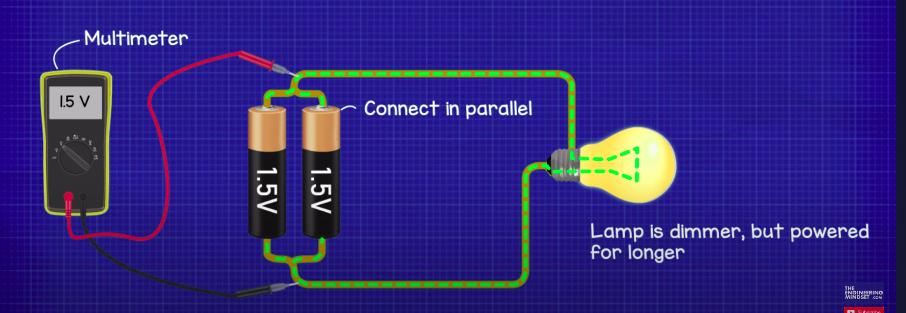Hardware Components
Index of Topics
How electricity works
- Electrons are negatively charged, meaning they flow from negative to positive
Electrons are the building blocks of understanding how electricity works
- Conductors
- have very few electrons in the valance shell allowing them to move freely
- example
- copper
- silver
- Insulators
- have many electrons in the valence shell not allowing the free electron to move freely
- Example:
- glass
- rubber
Current (not appied/ applied) to copper wire
- With no current supplied to a copper wire, electrons are free and move randomly
- When current is applied to the copper wire via a battery, the free electrons will move in the a circuit from negative to positive
(Closed / Open) Circuit
Voltage (V)
Water Analogy

- Like pressure in a water pipe. The more voltage means more pressure.
- More pressure water can flow == More pressure electrons can flow
- Voltage can exist without current
- Just like how we can measure pressure in a water tank without it flowing
- This is just measuring the pressure difference from the outside of the tank compared to inside the tank
- We can measure the voltage with a multimeter with a closed and open circuit
What is a Volt
- One Volt, is the force required to drive
one coulombthrough a resistor ofone ohminone second - Remember
1 coulomb= 6.242 * 10 ^ 18 
Volt = Joules / Coulomb- Joule = Work
- Coulomb = Group of flowing electrons
Voltage and Volts are different
- Voltage is the pressure
- Volts is the units we measure the pressure in
Potential Difference
- You will hear this term used a lot for voltage
- All this is saying is that “how much work can potentially be done by a circuit”
Voltage in Series

- if we cascade two batteries together in series, then the circuit will thus have more voltage, meaning a brighter light bulb
Voltage in Parallel

- If the two batteries are together in a parallel circuit, then the voltage stays the same because the electrons are split up, dividing the work into 2
- In this example. The lamp is dimmer but powered for longer than if it was in series
Two lamps, One battery

- The image shows how the one battery powers both lamps across each at 0.75 splitting the voltage into two between the the two lamps
Current
What is current
- Current is the flow of electrons measured in Amperes (Amps) past a single point in a circuit within a set amount of time
- Amps is also denoted by an
A 1 Amp = 1 Coulomb1 Coulomb = 6,242,000,000,000,000,000 electrons per second- In order test the current we need an Ammeter in series in the circuit to capture the current
Resistance
What is Resistance
- Resistance is a restriction to the flow of electrons
- Resistance is measured in Ohms
This example shows how size, material and temperature have resistance in a wire
Resistors protect components by restricting the flow of current
Types of Electricity
- Alternating Current (AC)
- current moves back and forth with the changing magnetic field
- used in wall sockets at home
- Direct Current (DC)
- Current travels only in one direction
- used in circuits that contain batteries
Electricity at Homes

- Electricity is produced at the power plant
- Voltage is increased and connected to the grid and transferred over long distances
- Electricity is produced at the power plant
REFERENCES
This post is licensed under CC BY 4.0 by the author.






